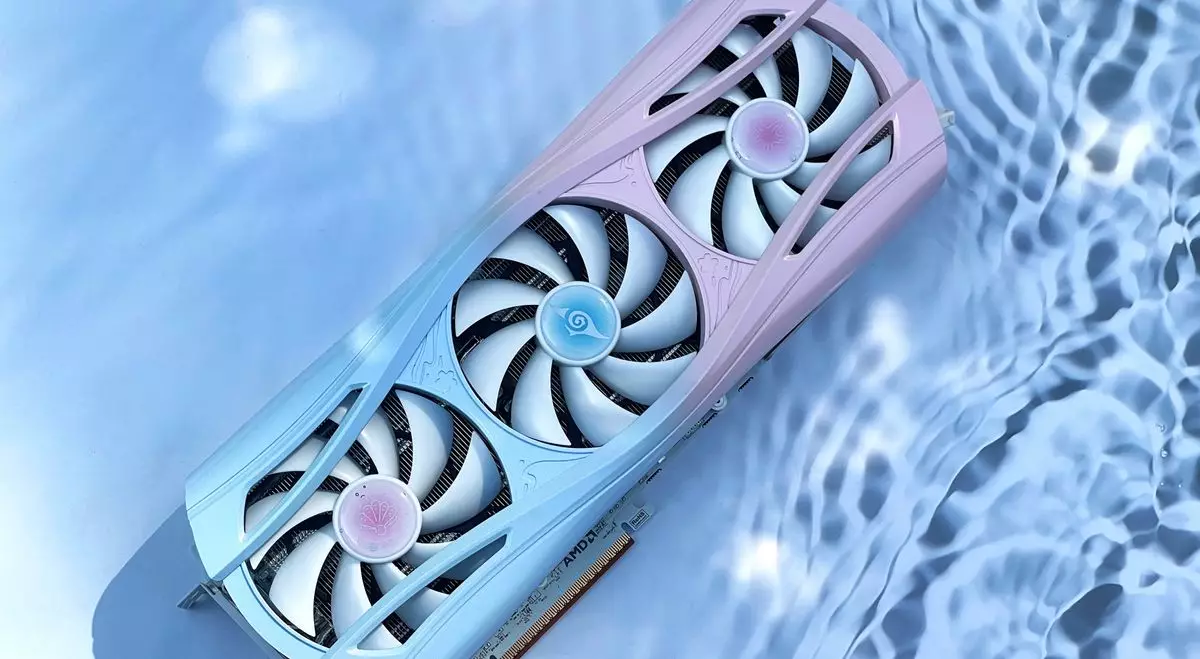AMD’s latest introduction to the gaming graphics card market, the Radeon RX 9070 and RX 9070 XT, has stirred significant excitement and anticipation among gamers. As AMD seeks to stabilize the supply of these new GPUs to meet soaring demand, speculations are rife about how swiftly these cards will become available at or near their Manufacturer’s Suggested Retail Price (MSRP). David McAfee, AMD’s VP of Product Management, addressed these concerns recently, offering insight into the company’s plans while acknowledging the challenges posed by a volatile market.
Despite the fact that the stock levels for the RX 9070 series have not been as dire as those seen with Nvidia’s RTX 50-series counterparts, enthusiasts have quickly discovered that availability is scarce. It’s a disheartening reality that as soon as these GPUs hit shelves, they fly off the racks. While this isn’t the first rodeo for AMD, the company’s efforts to ensure consumers can secure their dream gaming setup at reasonable prices are critical to their market strategy.
Understanding the Market Dynamics
McAfee outlined a simple yet crucial strategy for AMD’s approach to rectifying the supply issues: “Priority number one is restocking all of our partners.” This echoes a sentiment that resonates deeply in the gaming community—a desire for accessibility. Nevertheless, the intricacies of the graphics card market complicate matters. Unlike CPUs, AMD relies on third-party manufacturers—referred to as add-in board (AIB) partners—to create various iterations of their GPUs. Each of these partners produces different board designs, which may be priced above or below the MSRP based on the features and brand positioning they adopt.
This multifaceted supply chain means that although AMD can influence the direction of their products, they can’t control every facet of how these GPUs are marketed and sold. As McAfee articulates, “There are pieces of the graphics business that are far more complicated when it comes to putting product in the market.” This highlights a fundamental dichotomy in the technology sector—it’s not merely about creating a superior product but also about navigating the convoluted paths of market dynamics.
The Demand Surge and Supply Challenges
The RX 9070 launch has been described by McAfee as a “milestone event,” which is an understatement given the overwhelming global demand. The sheer excitement surrounding the RDNA 4 architecture led to an explosive increase in interest from both gamers and tech enthusiasts. Nonetheless, this demand surge raises a critical question: how quickly can AMD adapt to this newfound interest? Each day that passes without sufficient stock puts more pressure on AMD to continue innovating while ensuring that their customers aren’t left frustrated.
One significant factor influencing current supply levels is Yeston, a graphics card maker based in China that predicts a normalization of supply following April. However, for gamers outside of Asia, the question remains whether this will translate into better availability globally. It’s an essential consideration for anyone looking to invest in a new gaming rig, as Gpus remain an integral component of modern gaming experiences.
The Reality of Consumer Experience
As we navigate through this evolving landscape, the question arises: how long will it take before consumers can easily purchase gaming GPUs as they do with other tech products? Many gamers have grown weary of the long-standing GPU shortage, and the longing for straightforward purchasing experiences grows more acute with each passing release cycle. If AMD can optimize its supply chain strategy and streamline its collaborations with AIB partners, a return to normalcy might indeed be achievable.
Furthermore, the potential ramifications of this success extend beyond mere availability—they also influence pricing. Should AMD manage to strike the right balance, the excessive markups observed in the current market could become a relic of the past. Consumers are craving a time when browsing for a Radeon RX 9070 can be as unremarkable as selecting any other consumer electronics, rather than a frantic race against the clock where the end result is disappointment.
A Glimpse Into the Future
While AMD acknowledges that it relinquished control over some aspects by not producing reference designs for the RX 9070, it reflects a strategic choice aimed at fostering creativity among partners. In doing so, AMD may enable a diverse range of offerings that cater to varying consumer needs, which enhances overall market attractiveness.
As we look to the coming months, the fate of the RX 9070 series hinges on two significant elements: the adequacy of AMD’s response to the heightened demand and the readiness of the market as retailers adjust their stock strategies. Gamers are hopeful that, by the summer, purchasing a Radeon RX 9070 will be as easy as clicking “add to cart”—a scenario many have desperately awaited as they strive to elevate their gaming experiences without breaking the bank.

